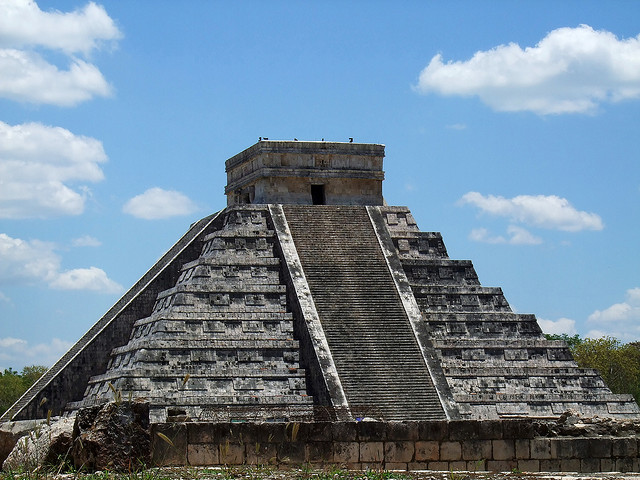For most teachers this date is the end of term but could it be the end of the world as well?
If you search this date on the internet you’ll get nearly 2 billion results. There is even a web-site specifically dedicated to this date and the doom laden prophecies associated with it.
The main source for all this is the ancient Mayan calendar. The Mayan civilisation was dominant in Central America from about 200 BC to 1540 AD. They used 3 different calendars. There was a religious one, the Tzolk’in, based on a year of 260 days (20 lots of 13 days) and a secular one, the Haad, based on 365 days. This was made of 18 months, called ‘uinals’, of 20 days. To this was added 5 days called ‘the period with no name’ symbolised by chaos. You were thought to be cursed for life if you were born during these 5 days. The religious and secular calendars synchronised once every 52 years, about the length of a lifetime. This is an interesting exercise in calculating the Lowest Common Multiple of 260 and 365 (=18980 days or 52 secular years).

The Maya were phenomenal at astronomical calculations even without the means to measure parts of the day. Their solar year works out to be equivalent to 365.242 days compared to our current value of 365.242198. It is more accurate than the Gregorian calendar we use (365.245 days). The Gregorian calendar, introduced by Pope Gregory XIII in 1572, attempted to allow for the solar year being just under 365 ¼ days long (as used in the Julian calendar from 45BC which brought in the leap year). The Gregorian calendar leapt forward 10 days and said leap days would not happen every century, unless the year was divisible by 400 (so 2000 was a leap year but not 1900). It took a while for some to adopt the Gregorian calendar, especially non-Catholic countries. It didn’t happen in Britain until 1752 when there were riots as people demanded to have their stolen days back.
|
Mayan name |
B’ak’tun |
K’atun |
Tun |
Winal |
K’in |
|
Days |
144,000 |
7,200 |
360 |
20 |
1 |
|
Approximate solar years |
394 |
20 |
1 |
||
| Note that the system isn’t uniformly base 20 with a tun being 18 x 20 not 202 | |||||
The Maya had another calendar, used for long periods. It was based on a year of 360 days, a tun. A k’atun was 20 tun and a b’ak’tun was 20 k’atuns or about 394 years. On 21st December, we will simply move onto the next b’ak’tun.
The date 21st December 2012, in the Mayan long calendar, will be 13.0.0.0.0. Suggestions that there will be a cataclysm are generally denied by modern scholars of Mayan history, so you’ll need to prepare the lessons for next term!
Don Hoyle



